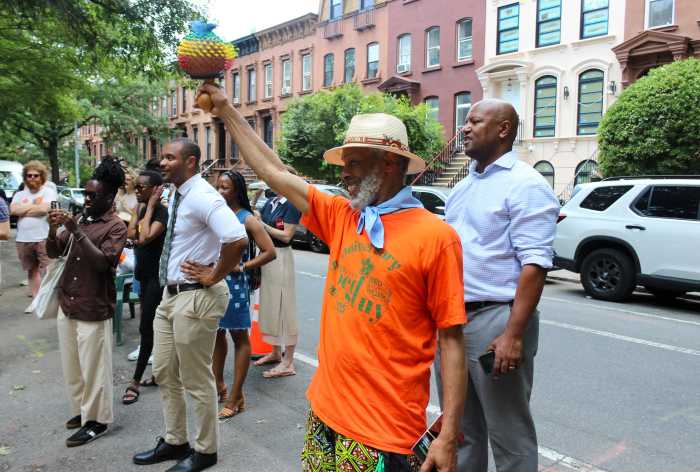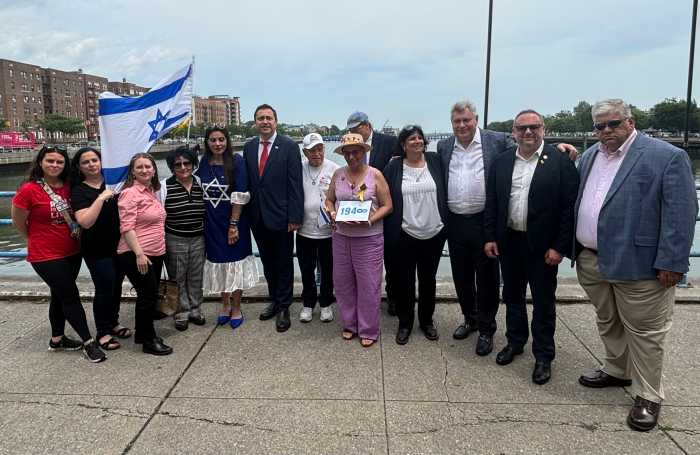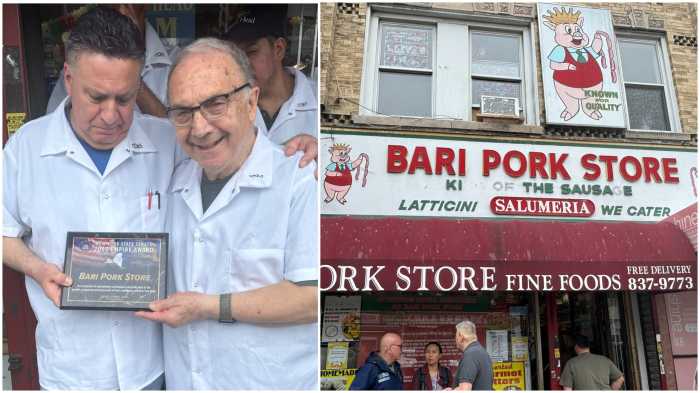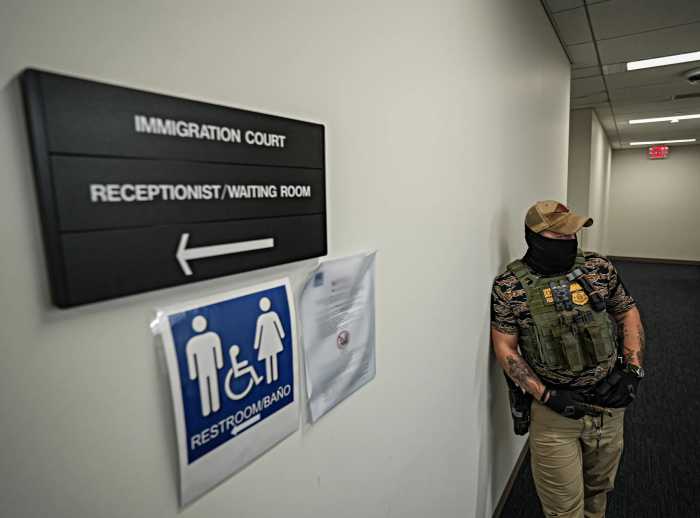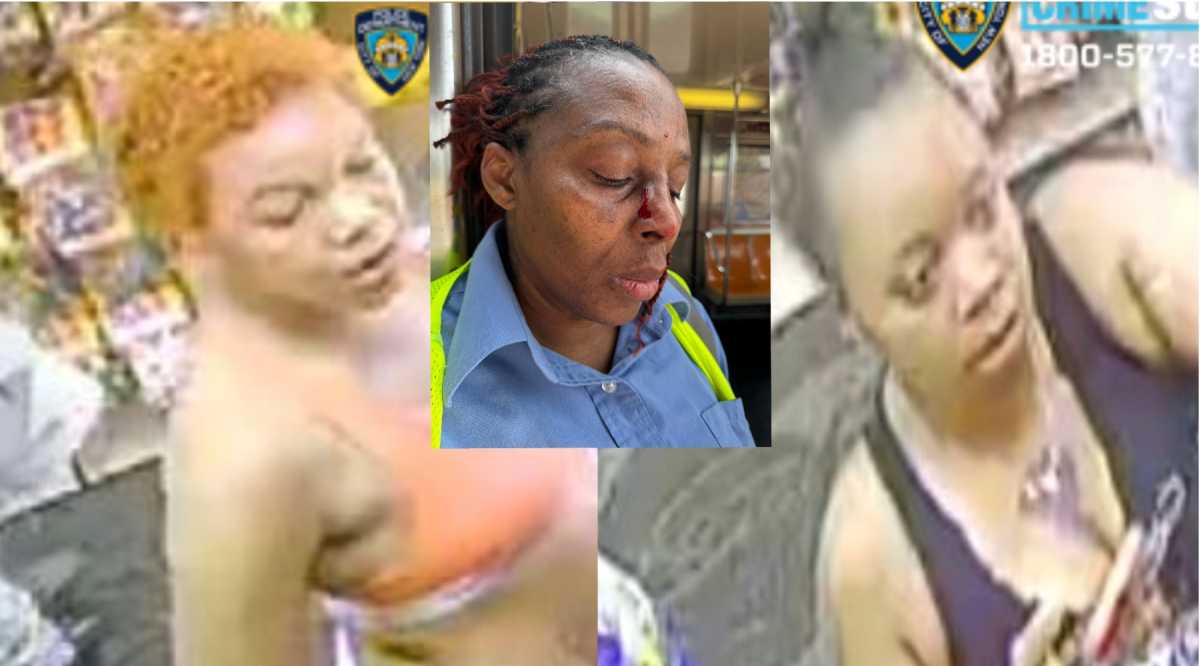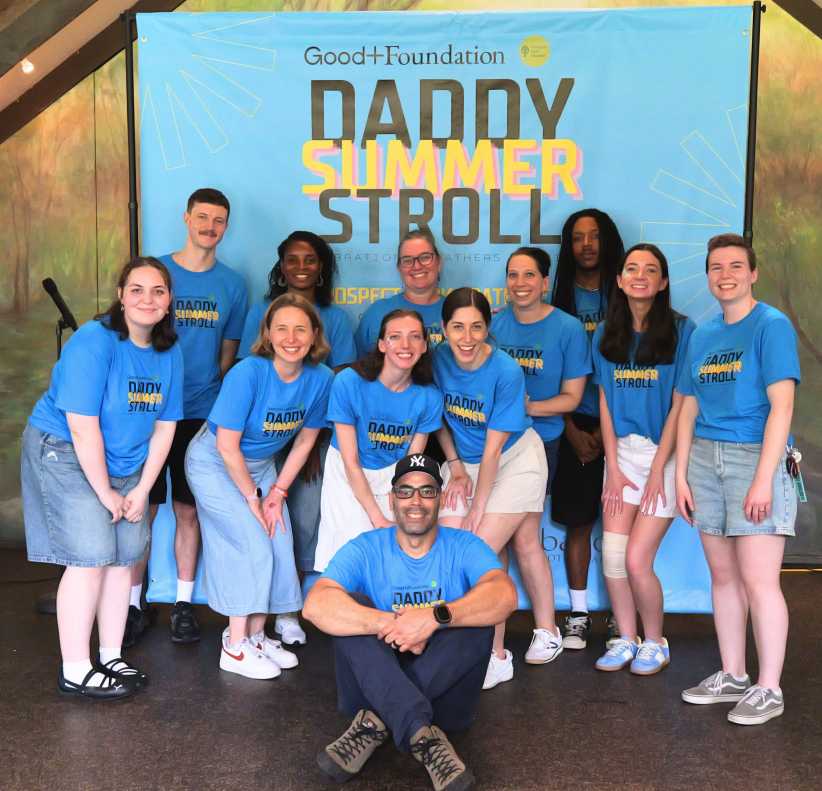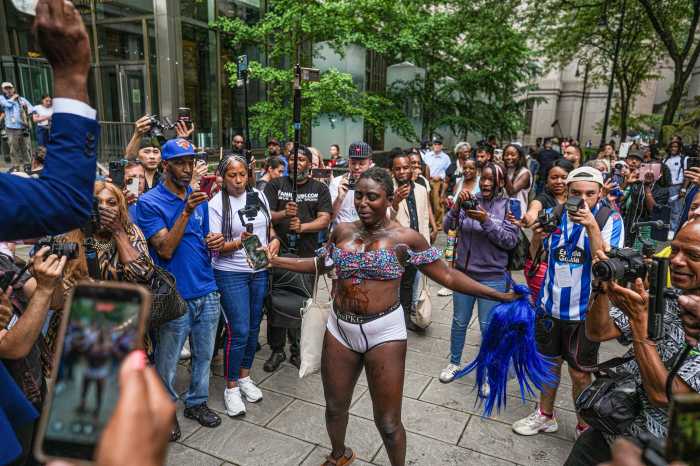One southbound lane of Flatbush Avenue that was eliminated after 9-11 to provide a security zone around the city’s emergency call center will soon be returned to drivers — and the new security for the building will come in the form of aesthetically reasonable bollards rather than the tomb-like structures that stunned Brooklynites when the Long Island Rail Road’s new Atlantic Terminal opened earlier this year.
The knee-high bollards appear to be near completion, meaning that the big concrete barriers that surround the 911 call center and bar pedestrians along Tillary Street and Flatbush Avenue Extension will be obsolete.
The barriers had apparently been placed as a security measure for the emergency management hub, which is already defended by a phalanx of idling police cars manned by cops who ensure that no pedestrians walk on Bridge Street without permission.
A spokeswoman for the NYPD, which manages the call center, was able to confirm that the barriers would be removed, but could not elaborate on how the design of the bollards was determined in time for this paper’s secure online deadline.
However they were designed, these bollards are a stark contrast to the mega-coffins at the LIRR Terminal about a mile south on Flatbush Avenue.
There, sarcophagus-like bollards — which are roughly four feet high and wide enough to contain a small person — have been criticized as being an ugly, mutant security measure.
Plus, they greatly exceed the NYPD’s own standards.
Those standards could be interpreted to suggest that the 911 call center is a “higher risk” target than the LIRR Terminal, given that it is the hub of all emergency calls in the city. The sizeable police presence at the call center reinforces this claim.
Numerous requests for clarification on how the design of the LIRR bollards was determined have been met with a secure silence.
The return of the southbound lane on Flatbush Avenue is expected to open up a bottleneck that congests traffic as cars leave the Manhattan Bridge.


